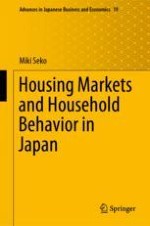2019 | OriginalPaper | Chapter
11. Earthquake Insurance Subscription Rates and Regional Cross-Subsidies
Author : Miki Seko
Published in: Housing Markets and Household Behavior in Japan
Publisher: Springer Singapore
Activate our intelligent search to find suitable subject content or patents.
Select sections of text to find matching patents with Artificial Intelligence. powered by
Select sections of text to find additional relevant content using AI-assisted search. powered by
